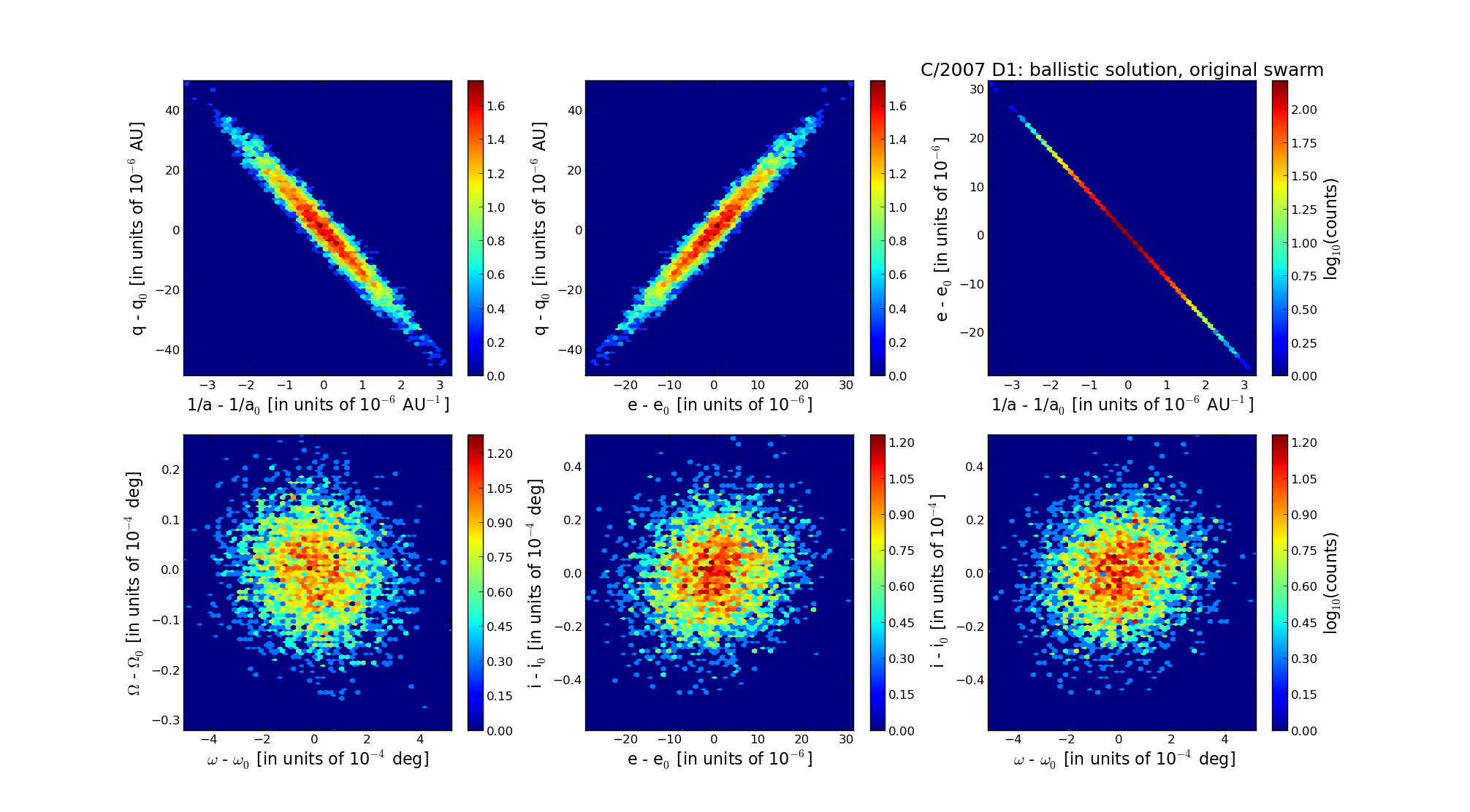C/2007 D1 LINEAR
more info
C/2007 D1 was discovered on 17 February 2007 by the LINEAR as an apparently asteroidal object, however quickly its cometary appearance was reported.
This comet made its closest approaches to the Earth on 22 February (7.880 au, 4 months before perihelion passage, 5 days after its discovery) and 4 March 2008 (7.933 au, 8.5 months after perihelion).
Solution given here is based on data spanning over 6.2 yr in a range of heliocentric distances: 8.82 au – 8.794 au (perihelion) – 14.7 au.
This Oort spike comet suffers large planetary perturbations during its passage through the planetary system that lead to a notable more tight future orbit with the semimajor axis shorter than 2000 au (see future barycentric orbit).
See also Królikowska 2014 and Królikowska and Dybczyński 2017.
This comet made its closest approaches to the Earth on 22 February (7.880 au, 4 months before perihelion passage, 5 days after its discovery) and 4 March 2008 (7.933 au, 8.5 months after perihelion).
Solution given here is based on data spanning over 6.2 yr in a range of heliocentric distances: 8.82 au – 8.794 au (perihelion) – 14.7 au.
This Oort spike comet suffers large planetary perturbations during its passage through the planetary system that lead to a notable more tight future orbit with the semimajor axis shorter than 2000 au (see future barycentric orbit).
See also Królikowska 2014 and Królikowska and Dybczyński 2017.
| solution description | ||
|---|---|---|
| number of observations | 548 | |
| data interval | 2007 02 17 – 2013 05 04 | |
| data type | perihelion within the observation arc (FULL) | |
| data arc selection | entire data set (STD) | |
| range of heliocentric distances | 8.82 au – 8.79 au (perihelion) – 14.7 au | |
| detectability of NG effects in the comet's motion | NG effects not determinable | |
| type of model of motion | GR - gravitational orbit | |
| data weighting | YES | |
| number of residuals | 1061 | |
| RMS [arcseconds] | 0.45 | |
| orbit quality class | 1a+ | |
| orbital elements (barycentric ecliptic J2000) | ||
|---|---|---|
| Epoch | 1695 05 15 | |
| perihelion date | 2007 06 19.62761600 | ± 0.00269300 |
| perihelion distance [au] | 8.79200698 | ± 0.00001358 |
| eccentricity | 0.99961354 | ± 0.00000832 |
| argument of perihelion [°] | 340.120329 | ± 0.000140 |
| ascending node [°] | 171.125352 | ± 0.000008 |
| inclination [°] | 41.426988 | ± 0.000014 |
| reciprocal semi-major axis [10-6 au-1] | 43.96 | ± 0.95 |
| file containing 5001 VCs swarm |
|---|
| 2007d1a5.bmi |

